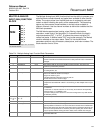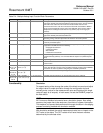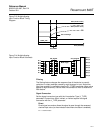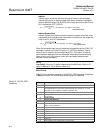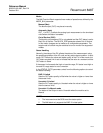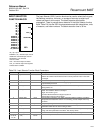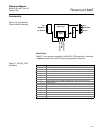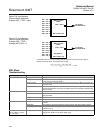
Reference Manual
00809-0100-4697, Rev EA
October 2011
Rosemount 848T
D-18
Modes
The ISEL function block supports three modes of operation as defined by the
MODE_BLK parameter:
Manual (Man)
The block output (OUT) may be set manually.
Automatic (Auto)
OUT reflects the selected value.
Out of Service (OOS)
The block is not processed. The BLOCK_ERR parameter shows Out of
Service. The target mode of a block may be restricted to one or more of
the supported modes. In this mode, changes can be made to all
configurable parameters.
Alarm Detection
A block alarm will be generated whenever the BLOCK_ERR has an error bit
set. The type of block errors for the ISEL block are defined above.
Process Alarm detection is based on the OUT value. The alarm limits of the
following standard alarms can be configured:
• High (HI_LIM)
• High high (HI_HI_LIM)
• Lo (LO_LIM)
• Lo low (LO_LO_LIM)
In order to avoid alarm chattering when the variable is oscillating around the
alarm limit, an alarm hysteresis in percent of the PV span can be set using the
ALARM_HYS parameter. The priority of each alarm is set in the following
parameters:
•HI_PRI
•HI_HI_PRI
•LO_PRI
•LO_LO_PRI
Table D-8. Alarm Priority Levels
Number Description
0 The priority of an alarm condition changes to 0 after the condition that caused the
alarm is corrected.
1 An alarm condition with a priority of 1 is recognized by the system, but is not
reported to the operator.
2 An alarm condition with a priority of 2 is reported to the operator, but does not
require operator attention (such as diagnostics and system alerts).
3-7 Alarm conditions of priority 3 to 7 are advisory alarms of increasing priority.
8-15 Alarm conditions of priority 8 to 15 are critical alarms of increasing priority.



